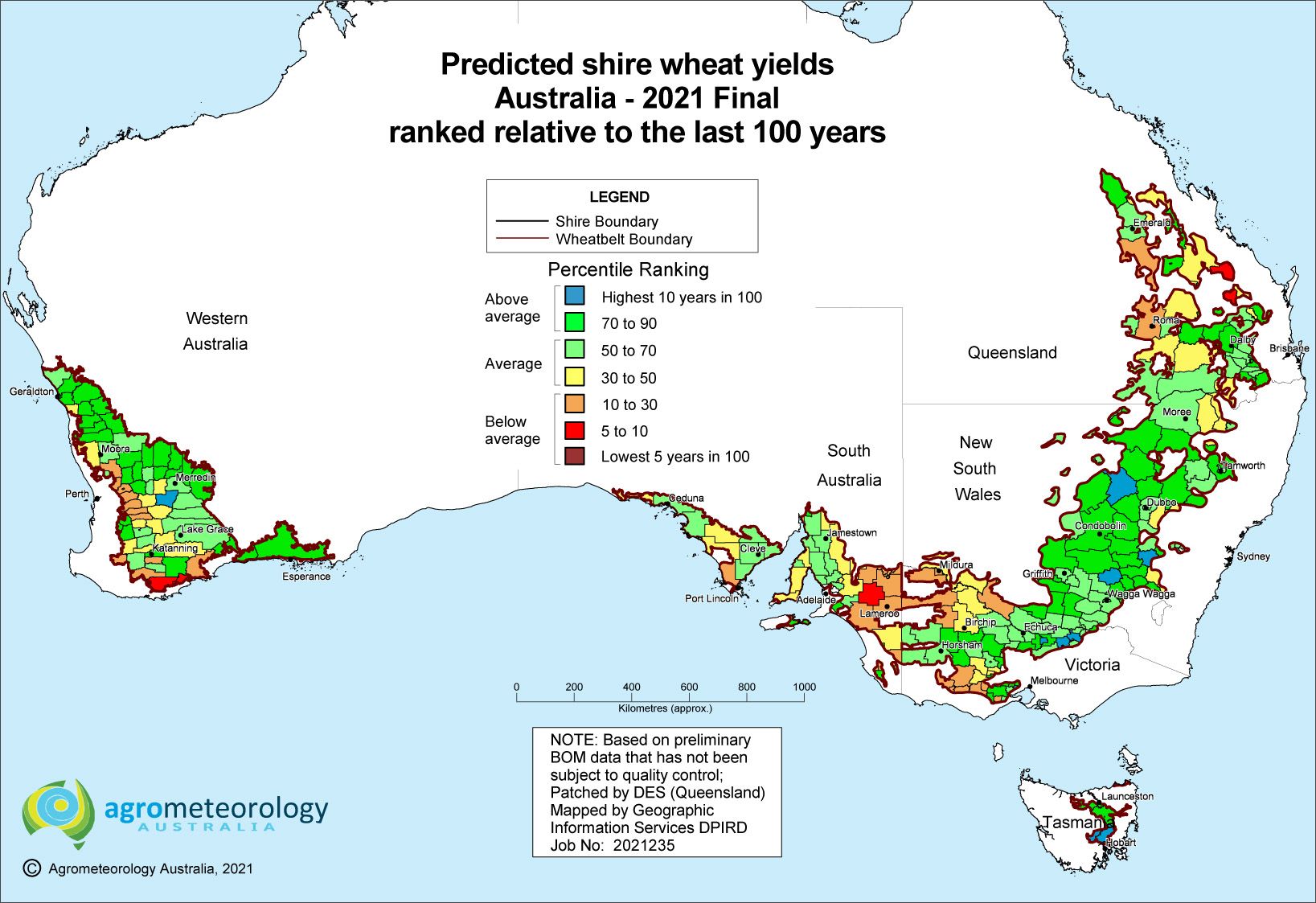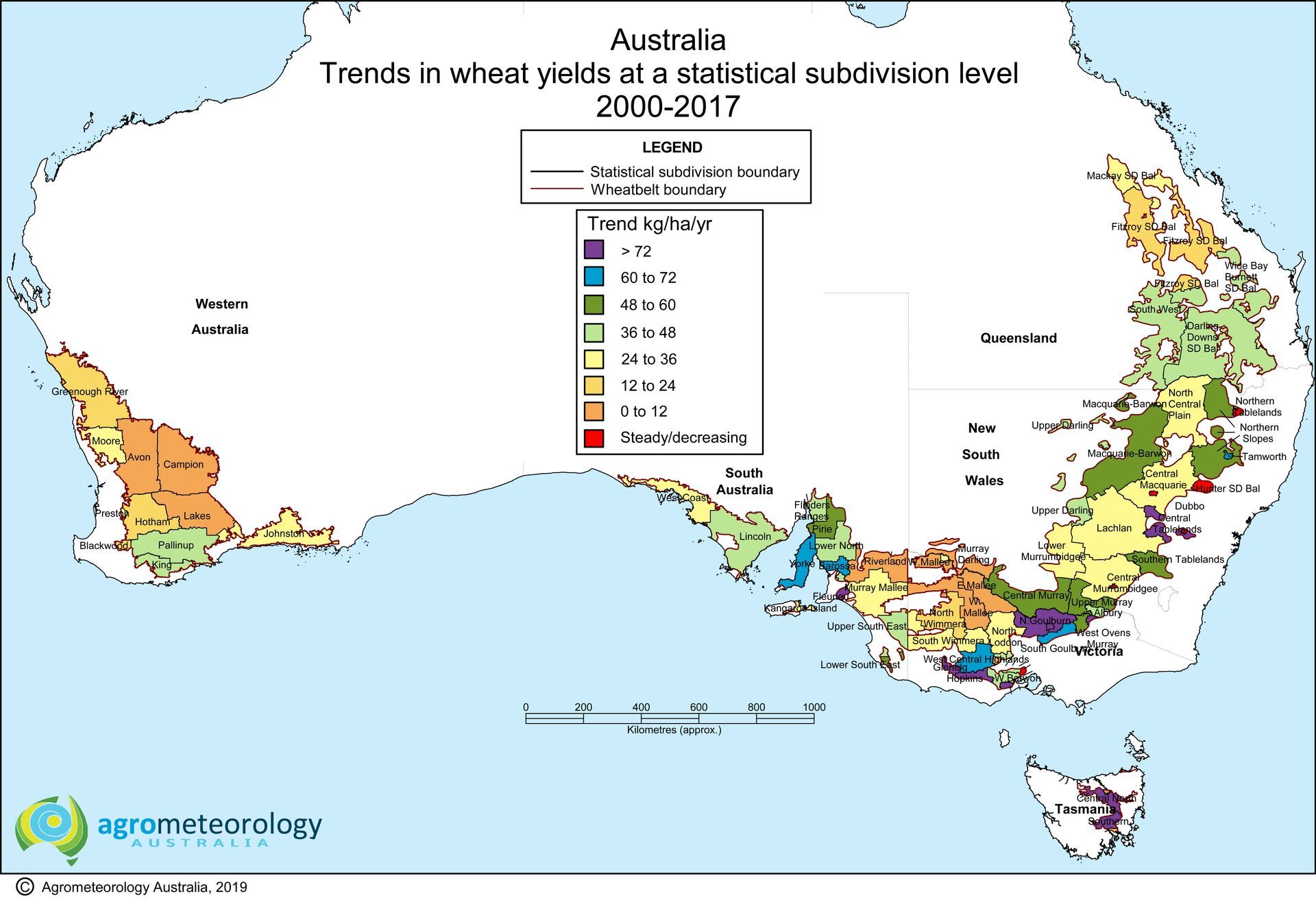Making your life easier
Adapt now, benefit later.
AMA’s suite of climate and crop products are designed to assist agribusiness in deciding how risk-averse to be in each situation. With reliable science-based predictions, trends, forecasting, and mapping, you’re equipped with concrete information that takes the guess work out of everyday operations while minimising risk, allowing you to adapt to what’s ahead.
Seasonal forecasting
Australian climate and winter crop outlook.
Climate Outlooks integrate AMA global indicators related to ENSO (El Nino-Southern Oscillation), the Indian Ocean Dipole and AMA's Antarctic Index of weather systems coming up from the southwest. Based on a series of long-lead indicators, forecasts are produced of the likely May – October rainfall prospects from the end of the previous year.
This service begins in early November the year before, and is updated in early February, with monthly reports following at the beginning of each month. A major discovery about why a drought occurred in southeastern Australia in 2024 (compared to a better season in northeastern cropping areas and WA) has contributed to a new "lead-index" that assists forecasts of extreme events between early February and July. This warns of droughts earlier than other indices in the seeding period, and explains why the SOI and IOD don't work in certain situations, e.g. 2015, 2018 and 2024. It also explains why regional droughts occur, e.g. 2000, 2010 and 2012 droughts in WA.
National soil moisture and shire wheat yield ranking maps are included in monthly climate outlook reports through to early October.
The service will therefore include:
- November (year before) — National summer rainfall (November – April) outlook map based on analogue years, and discussion of a long-lead index of Australian rain for the next winter season.
- February — A climate report is produced with graphs showing a "lead-index" and "now-time" forecasting indices for the southwest of WA and south-eastern Australia (northeastern Australia is in development).
- March – October — a monthly update of climate indicators, soil moisture maps (February-June) and all Australian crop yield rankings based on the STIN crop model (July-October).
Standard cost for an annual subscription: $600+GST. This has been reduced from $770 in previous years and can be purchased below for the 2026 season with PayPal (or you can make email contact below for an invoice to be sent).
2025 season update: On the 4th February 2025 the new lead-indices successfully predicted a good year for Western Australia and northeastern Australia (north of central NSW), while a first caution of a below average rain was issued for south-eastern Australia. On the 4th April a single 2011 analogue was issued which had had a very similar rainfall pattern between April-September/October as this year.
Please note:
Once payment has been made the latest climate and crop outlook report will be emailed to you shortly afterwards. Alternatively, if an electronic funds transfer is preferred, an invoice can be emailed to you. In this case, go to the contact page and leave a message.
Crop yield forecasting
Individual Crop Ranking Maps (assuming average rainfall for rest of season).
A downloadable overview of crop yield rankings compared to the previous 100 years are summarised in STIN yield ranking maps.
Cost: $100 + GST — $110 + GST/national map. For publications that disseminate maps outside an organisation, a national map is $600 + GST.
(Note subscribers to the seasonal forecasts receive the latest ranking maps in their climate and crop outlooks)
Productivity Analysis of grain yields
The STIN crop yield forecasting system can be run in many ways to asses how grain productivity has gone up spatially and temporally across the wheatbelt.
Wheat yields trends in kg/ha/year (see right) and changes in wheat water use efficiency in kg/ha/mm can be mapped across the grainbelt. A detailed report of drivers (climate, technology, soils) can be produced.




